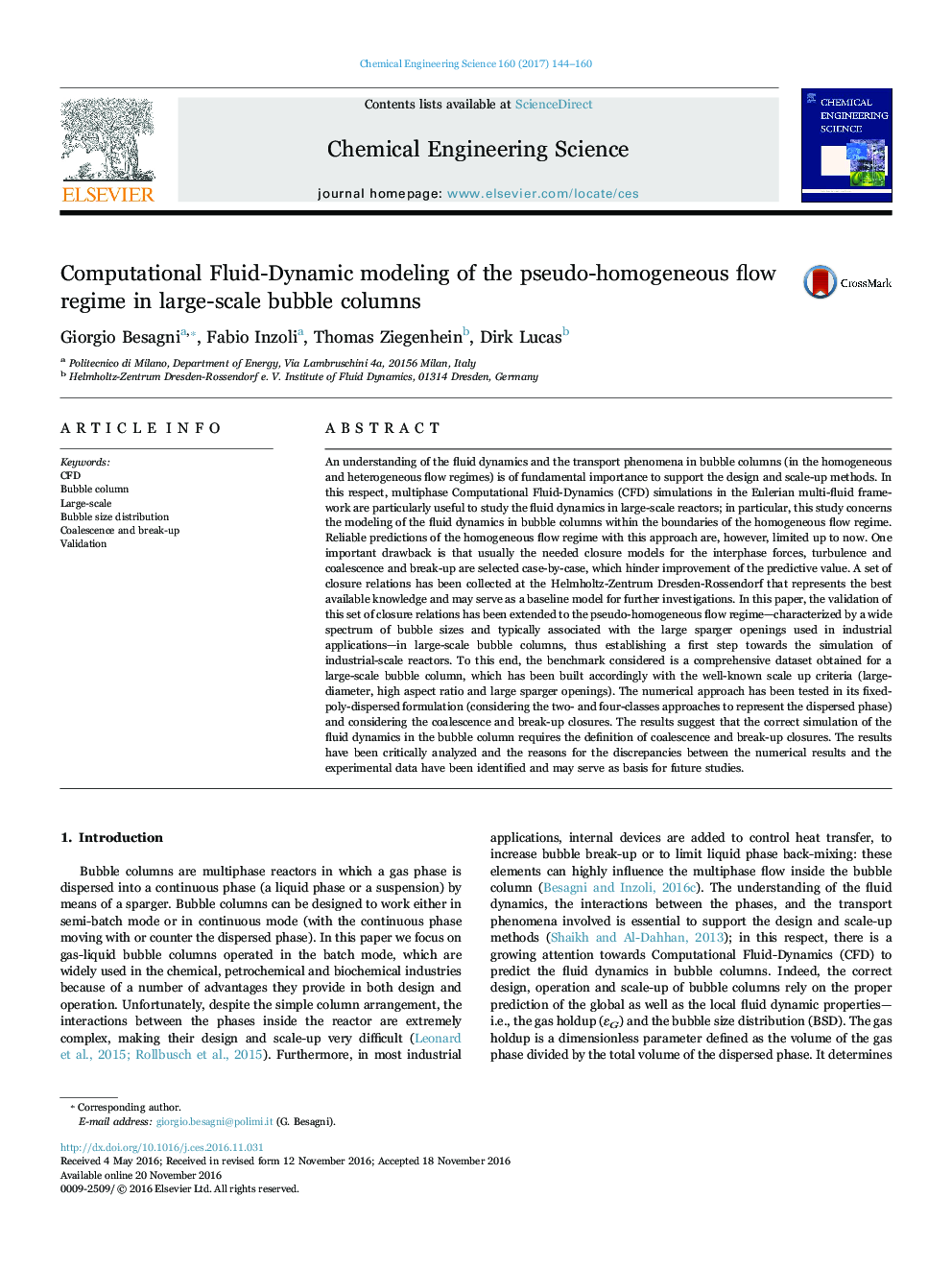| کد مقاله | کد نشریه | سال انتشار | مقاله انگلیسی | نسخه تمام متن |
|---|---|---|---|---|
| 6467750 | 1423259 | 2017 | 17 صفحه PDF | دانلود رایگان |
- Large-scale bubble column is simulated using the Eulerian multi-fluid approach.
- Validated set of closure models for the pseudo-homogeneous regime in a large-scale reactor.
- Fixed-poly-dispersed and poly-dispersed approach with bubble coalescence & break-up formulations are compared.
- Sensitivity analyses on velocity classes are performed.
- Sensitivity analyses on bubble size distribution at the inlet are performed.
An understanding of the fluid dynamics and the transport phenomena in bubble columns (in the homogeneous and heterogeneous flow regimes) is of fundamental importance to support the design and scale-up methods. In this respect, multiphase Computational Fluid-Dynamics (CFD) simulations in the Eulerian multi-fluid framework are particularly useful to study the fluid dynamics in large-scale reactors; in particular, this study concerns the modeling of the fluid dynamics in bubble columns within the boundaries of the homogeneous flow regime. Reliable predictions of the homogeneous flow regime with this approach are, however, limited up to now. One important drawback is that usually the needed closure models for the interphase forces, turbulence and coalescence and break-up are selected case-by-case, which hinder improvement of the predictive value. A set of closure relations has been collected at the Helmholtz-Zentrum Dresden-Rossendorf that represents the best available knowledge and may serve as a baseline model for further investigations. In this paper, the validation of this set of closure relations has been extended to the pseudo-homogeneous flow regime-characterized by a wide spectrum of bubble sizes and typically associated with the large sparger openings used in industrial applications-in large-scale bubble columns, thus establishing a first step towards the simulation of industrial-scale reactors. To this end, the benchmark considered is a comprehensive dataset obtained for a large-scale bubble column, which has been built accordingly with the well-known scale up criteria (large-diameter, high aspect ratio and large sparger openings). The numerical approach has been tested in its fixed-poly-dispersed formulation (considering the two- and four-classes approaches to represent the dispersed phase) and considering the coalescence and break-up closures. The results suggest that the correct simulation of the fluid dynamics in the bubble column requires the definition of coalescence and break-up closures. The results have been critically analyzed and the reasons for the discrepancies between the numerical results and the experimental data have been identified and may serve as basis for future studies.
Journal: Chemical Engineering Science - Volume 160, 16 March 2017, Pages 144-160
